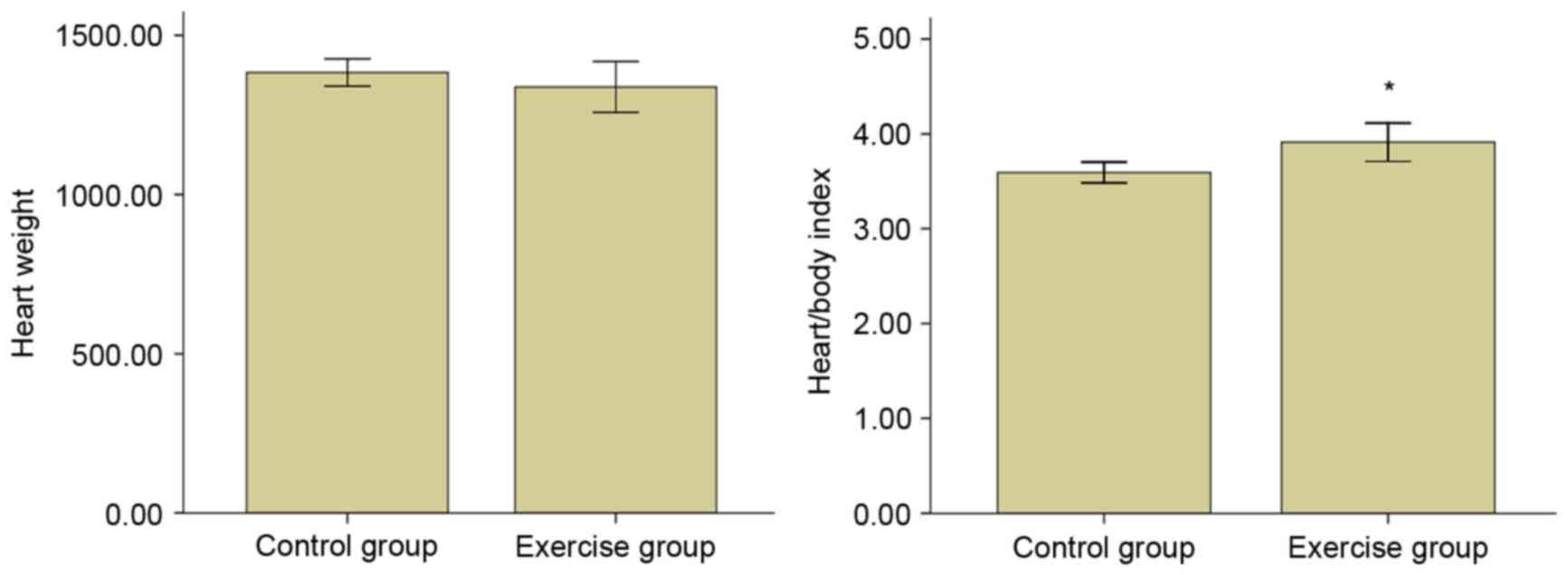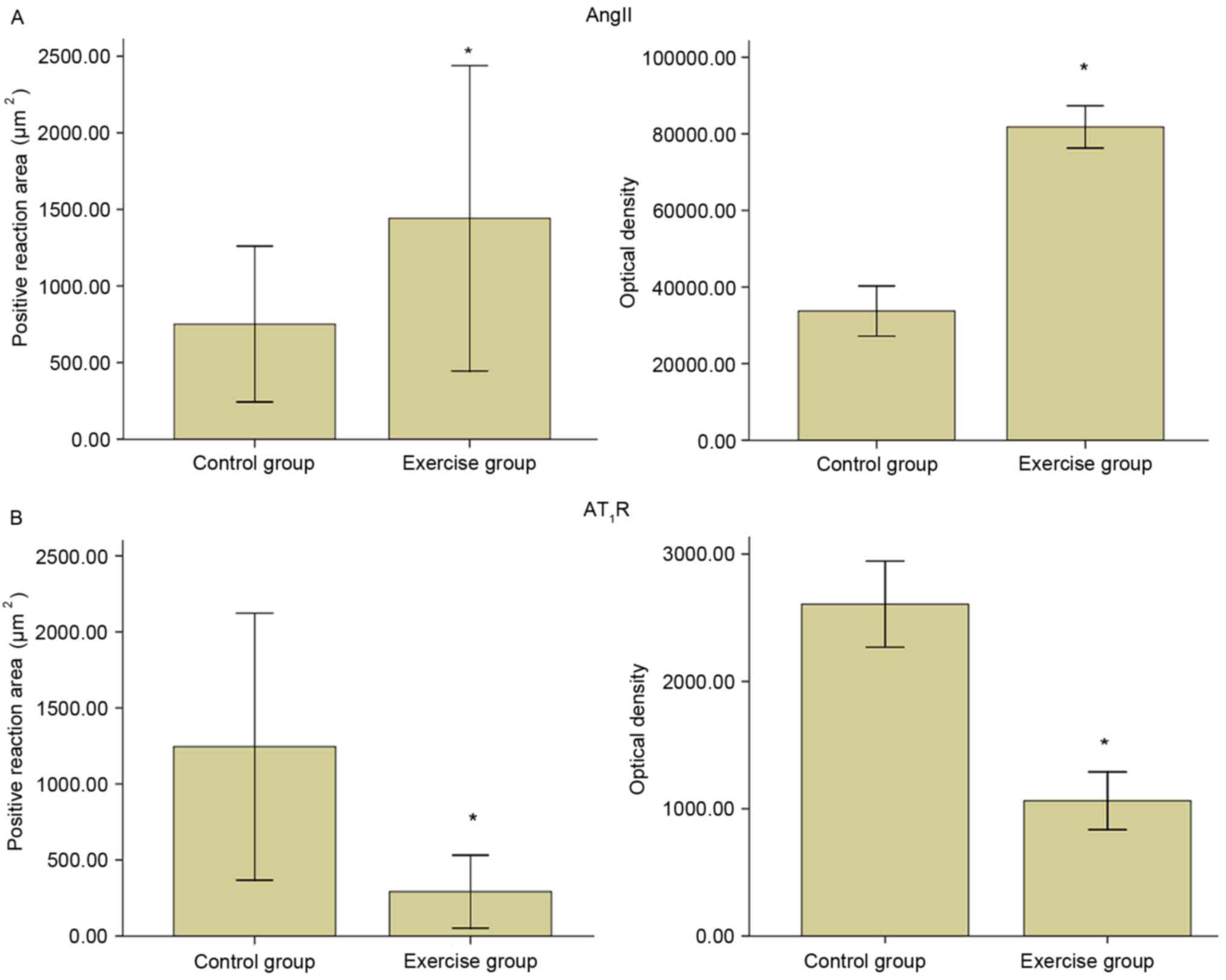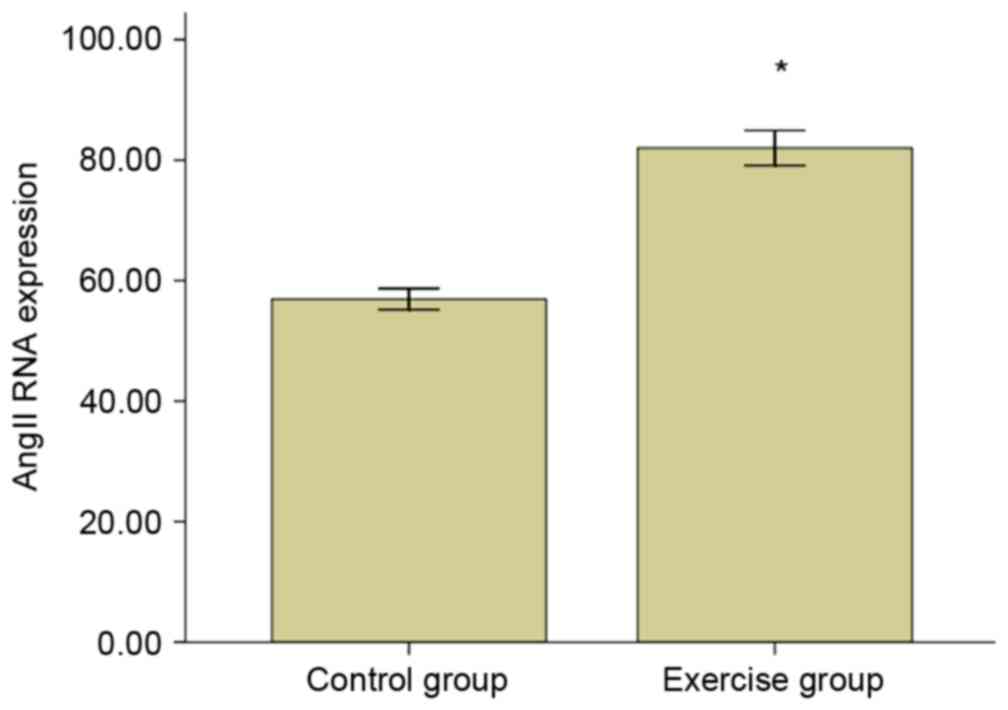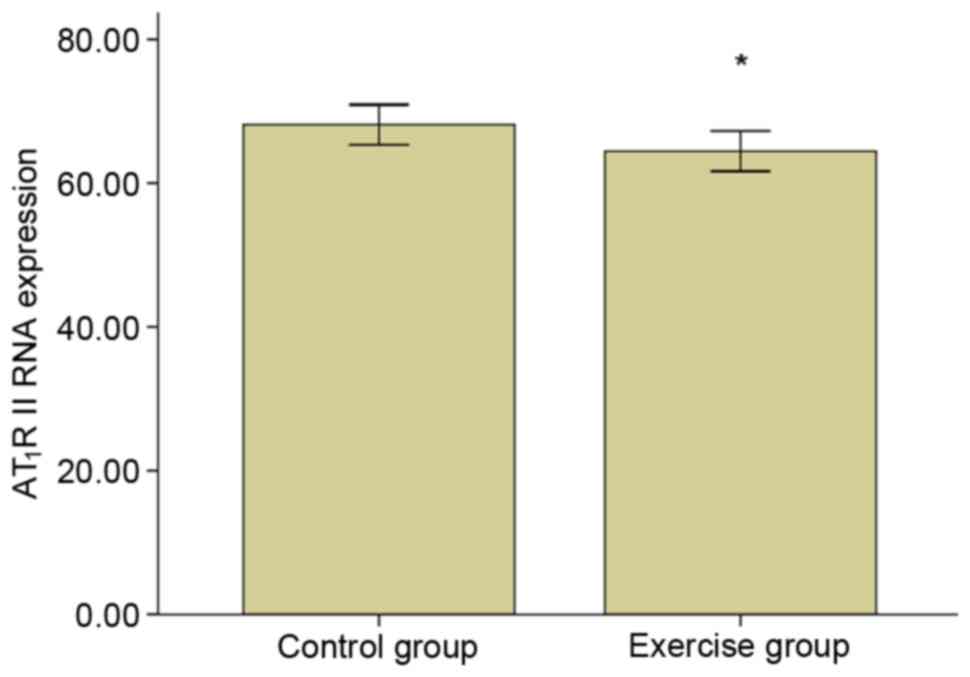Effects of moderate‑intensity endurance exercise on angiotensin II and angiotensin II type I receptors in the rat heart
- Authors:
- Published online on: June 27, 2017 https://doi.org/10.3892/mmr.2017.6864
- Pages: 2439-2444
-
Copyright: © Li et al. This is an open access article distributed under the terms of Creative Commons Attribution License.
Metrics: Total
Views: 0 (Spandidos Publications: | PMC Statistics: )
Total PDF Downloads: 0 (Spandidos Publications: | PMC Statistics: )
Abstract
The current study was aimed at examining the effects of moderate‑intensity endurance exercise on the expression of angiotensin II (AngII) and AngII type 1 receptor (AT1R) in the rat heart. Male Sprague‑Dawley rats were randomly divided into the control group (n=20) and moderate‑intensity endurance exercise group (n=20). Cardiac hypertrophy was induced by treadmill endurance training for 8 weeks. The mRNA expression of AngII and AT1R were assessed by reverse transcription‑quantitative polymerase chain reaction. The immune response positive area and optical density of AngII and AT1R was measured by immunohistochemistry. AngII was primarily expressed in the cytoplasm and membrane, however infrequently in coronary vascular wall smooth muscle cells. AT1R was primarily expressed in the coronary vessel wall smooth muscle, rarely in cardiac cells. The mRNA expression of cardiac AngII was significantly increased after the 8‑week exercise period, while AT1R was significantly decreased. Immunohistochemistry indicated a significant increase in the AngII immune‑positive area and optical density after the 8‑week exercise. The AT1R immune‑positive area and optical density was significantly reduced following the 8‑week exercise. In conclusion, subsequent to 8‑weeks endurance training, the AngII expression was increased and the AT1R expression was decreased. AT1R may expand the coronary artery, thereby increasing coronary blood flow and ensuring the energy supply of heart during exercise. The expression change in AngII does not reflect the character of cardiac hypertrophy. The exercise‑induced change in the expression of AngII and AT1R may be a protective mechanism to avoid cardiac pathological hypertrophy.
















